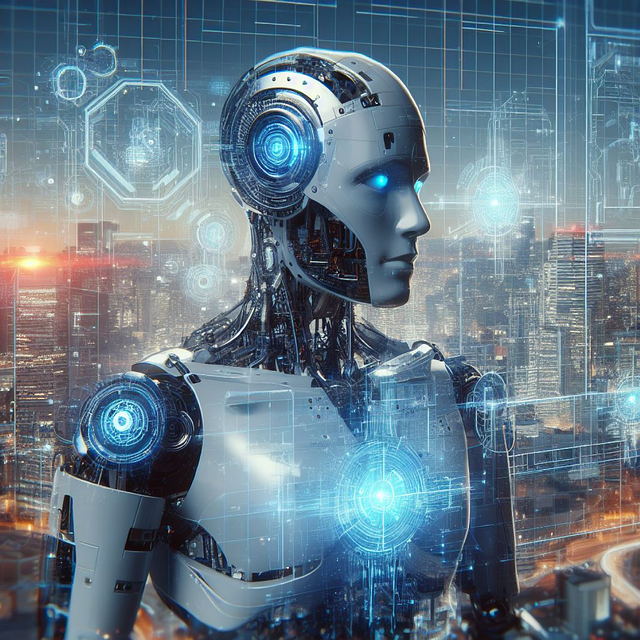Generative AI is revolutionizing chatbot development, creating ochatbots that engage in natural language conversations, answer complex queries, and generate tailored content. Design involves crafting a unique persona and defining functionality, ranging from user engagement to task-oriented interactions. The technical process includes curating datasets, data preprocessing, model selection (like GPT-based models), training through backpropagation, and transfer learning for contextually relevant responses. Deployment strategies involve integrating into platforms, pilot testing, iterative improvements, regular updates, and user feedback loops to enhance performance and stay competitive in the market.
“Unleash the power of conversational AI with your own Generative AI chatbot! This comprehensive guide takes you on a journey from concept to creation, covering all aspects of developing an engaging and intelligent ochatbot. From demystifying Generative AI fundamentals to designing unique personas and implementing technical solutions, we’ll explore effective strategies. Learn how to build, train, and deploy your ochatbot, plus discover continuous improvement techniques. Get ready to revolutionize customer engagement with this cutting-edge technology.”
- Understanding Generative AI: The Foundation of oChatbot Development
- Designing the Chatbot's Persona and Functionality
- Building and Training the Model: Technical Implementation
- Deployment and Continuous Improvement Strategies for Your oChatbot
Understanding Generative AI: The Foundation of oChatbot Development

Generative AI is revolutionizing the way we interact with technology, laying a robust foundation for oChatbot development. At its core, generative AI focuses on creating content—text, images, audio, or even video—by learning patterns from vast datasets and generating new outputs that mimic those patterns. This process involves advanced machine learning techniques, particularly deep learning and transformer architectures, which enable the model to understand context, generate coherent responses, and evolve over time.
By harnessing generative AI, oChatbots can engage in natural language conversations, answer complex queries, and even create tailored content for users. They learn from user interactions, adapt to new information, and continuously improve their performance. This dynamic nature sets them apart from traditional rule-based chatbots, making them more versatile and capable of handling a broader range of tasks and user needs.
Designing the Chatbot's Persona and Functionality

When designing a generative AI chatbot, one of the most critical aspects is crafting its persona and functionality. The chatbot’s personality should align with your target audience and use case. Consider whether it needs to be friendly and conversational for user engagement or more direct and task-oriented. This involves deciding on tone, language, and even humor to create a unique and appealing character. For instance, a customer support chatbot might adopt a helpful and patient demeanor, while a creative writing assistant could have a playful and imaginative tone.
Functionality refers to the specific tasks or abilities you want your chatbot to perform. It could include answering questions, generating text, offering recommendations, or even completing simple transactions. Integrating Natural Language Processing (NLP) capabilities allows the chatbot to understand user inputs and generate contextually relevant responses. You’ll also need to define the knowledge base and data sources it will tap into to provide accurate and informative answers. This process ensures that your chatbot offers a seamless and valuable experience for users, making it an effective tool in various applications.
Building and Training the Model: Technical Implementation

Building and training a generative AI chatbot involves a complex technical implementation process. The first step is to gather and prepare vast amounts of data relevant to your chatbot’s domain. This dataset should cover a wide range of user queries and responses, ensuring diversity to enable the model to learn various conversational patterns. Data preprocessing techniques such as cleaning, tokenization, and formatting are essential to ensure the model receives structured inputs.
Next, choose or develop a suitable architecture for your chatbot model. Transformer-based models like GPT (Generative Pre-trained Transformer) have proven effective in natural language processing tasks. These models learn contextual relationships between words, enabling them to generate coherent responses. Training involves feeding the dataset into the model and adjusting its parameters through backpropagation, iteratively improving its performance. Advanced techniques like transfer learning or fine-tuning can further enhance the chatbot’s capabilities, making it more adaptable to specific user needs and ensuring engaging interactions through an ochatbot interface.
Deployment and Continuous Improvement Strategies for Your oChatbot

Once your oChatbot is developed and ready, deployment is the next crucial step. You can start by integrating it into your existing customer service platforms or websites to enhance user interactions. Consider a phased roll-out strategy, beginning with a pilot group of users to gather initial feedback and identify areas for improvement. This iterative approach ensures that your oChatbot evolves based on real-world interactions, enhancing its performance over time.
Continuous improvement is essential for any AI model, including your oChatbot. Regularly update and retrain the model using new data sets to adapt to changing user needs and preferences. Implement a feedback loop where users can rate their experiences and provide suggestions. By analyzing this feedback, you can refine conversation flows, expand knowledge bases, and improve overall user satisfaction, ensuring your oChatbot remains competitive and relevant in the market.
Creating an effective OChatbot involves a multifaceted approach, from grasping the fundamentals of Generative AI to designing its persona, building and training the model, and implementing continuous improvement strategies. By understanding these key components, you can develop a sophisticated and engaging OChatbot that enhances user interactions and drives meaningful outcomes. Remember, the journey doesn’t end with deployment; ongoing refinement is essential to keep your chatbot at the forefront of technology.
